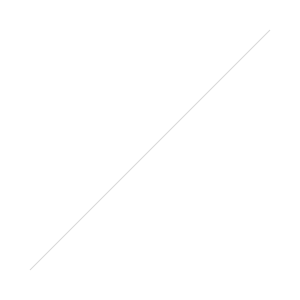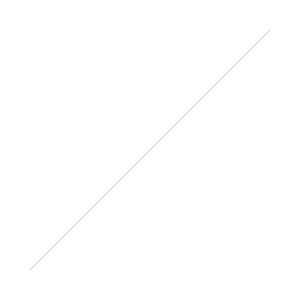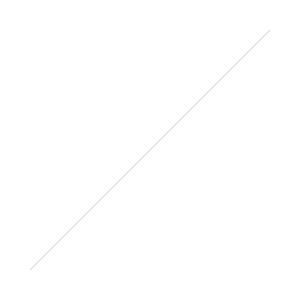A little over a dozen years ago, I received a grant from the
Genesee Valley County Council on the Arts. My project was to paddle the Genesee River, and produce a sketchbook about the trip. The project had an unintended effect- I realized I didn't like my work. Didn't like is probably the wrong description- maybe didn't care about. The downside was that at 40, to be faced with the realization that you don't like the result of your efforts is pretty tough to take. It is my job. The upside is it set me on the path of trying to figure out how to change course.
So I went back to my favorite book,
Arctic Dreams, by Barry Lopez. It was reading the book for the first time in my late 20's that made me more serious about my outdoor interests, canoe trips in particular. Spending extended periods in wild country was suddenly given a legitimacy, at least in my mind- no longer just goofing off. Returning to it at 40 helped me start thinking more seriously about the why of my painting. Why am I compelled to paint? Why landscape? I've always been happier when there is a reason that I can make sense of.
So for several years I persued the idea of the memory of landscape. The idea grew and evolved, and eventually ended up taking a somewhat different direction, which resulted in some new, large format pieces that I exhibited at
SUNY Geneseo.
Trespass, oil on canvas, 48 x 144 inches.
The Artifact of Landscape came down two years ago this month. I was happy about the show, happy in terms of feeling that what I had set out to do had been successful, bringing some of the tactile feel of a a landscape into an indoor space, a gallery setting. Part of that was the scale of the work, part the way I had pushed to paint, with the intention of the layers of paint reflecting the textures of a place, that tactile feeling of moving though an area. Or it did to me, and that's really all I can ask.
Lamar Valley Erratics, YNP, 48 x 144 inches
But then I was faced with where to take it, this new direction. The idea had at least partially evolved in
Yellowstone National Park. The park is 2000 miles from our home in South Lima, less than convenient. I'm nowhere near done exploring the park, and painting the landscape there, but I needed an area closer to home. Someplace it might be easier to access to build upon this new body of work. Darby and I talked about our area, the Finger Lakes of western NY, a good possibility. Or the Adirondacks, where I've done canoe trips for years, and we've taken family vacations. But then an opportunity dropped in my lap, too good to pass up. Well, Darby convinced me it was too good to pass up.
My friend Bob White is a sporting artist, specializing in fishing and hunting images that reflect his life as a fishing guide and lifelong hunter. In the fall of 2010, I was reading
Bob White's Studio News. You can subscribe for updates on his work, goings on and general nailing-the-shit-out-of-life type life. So there I was reading about his summer's latest bit of awesomeness, doing an artist's residency at
Bristol Bay Lodge, where he also guides. It was inspiring, looked like a blast, and left me with my head in my hands. Darby said, What's up? And I described what I'd read about Bob's trip, and said, I just don't even know how to ever make that happen.
So jump forward about 6 months, I check the morning'e email, and there's a note from Bob. It said essentially, Steve and I decided the residency was pretty cool, so we want to expand it. Wanna come up and paint for a week? Oh, and you can fish all you want to. We are inviting you,
CD Clarke and
Jeff Kennedy.
Obvious SPAM. Ha, this stuff doesn't happen to me.
Turns out it does, when Bob drops it in my lap. But it took Darby to drop me on my head. She got home, me head in hands again, and said, What's up? I told her about the offer, then said I don't think I can make it work schedule-wise. She looked at me. Didn't bat an eye, then laughed and said, You're going, it's perfect for what you are trying to do. A little less convenient than the Adirondacks, but its perfect. Write back, say yes. You're going. No…nope….zip….zipit….. you're going.
So, I wrote back to Bob. But I didn't say yes. At first. First I said something along the lines of, You know, BW, this isn't really the kind of work I do. You, Chris, and Jeff, you guys are sporting artists and you all do plein aire painting. Me, not so much. I quit working that way about 12 years ago.
( A little aside here- I am no longer interested in plein aire painting, in the doing of it. I still love to look at the pleine air work of others, my friend
Brian Eppley's in particular. But me not being interested is typical and kind of funny, as plein aire painting has really taken off in the art market over the last 8 or 10 years. Years ago my friend Quisp accused me of being a slave to my contrary-ness. I though a minute, and said, No, I'm a slave to my independence. My independence more often than not puts me out of step with what is going on else where. While I was paddling the Genesse River, all those years before, I had realized I was painting plein aire, not because I wanted to, but because I thought that was what I was supposed to be doing to be an artist. But it leaves me irritated, with work I that I don't feel addresses my interests in the land, and feeling like I had missed out on other things I could be doing outside, other things I could be seeing. So I quit doing it, just in time to miss the building wave of popularity. Life).
But in response to my protest, Bob said, I don't care.
I said I may not have anything to show for months, even a year or two after, if at all.
Bob said, I don't care, I just want you to be part of it.
I said, What about Steve? (that would be
Steve Laurent, the manager of Bristol Bay Lodge, and a talented photographer as well).
Bob said, He won't care, he's all-in on this.
So I guess I was out of excuses to not take advantage of the greatest opportunity to fall in my lap. Despite always making things more difficult than they need to be, I was in.
After doing a show on Long Island, two in Colorado, and another in Seattle, early last August I headed for Alaksa.
In Anchorage, I spent the day fishing with my friend Jerry Balboni. We might have had a beer or two as well. Late in the day he and his wife Anna dropped me at the hotel where I was supposed to meet Jeff- whom I hadn't known previously. I stepped into the lobby and immediately recognized him, an old friend I just hadn't met yet. We may have had a couple more beers while we visited about the upcoming week.
First thing in the morning, we grabbed the shuttle to the airport and we were headed to Dillingham.
I hadn't been in Alaska in 13 years. I hadn't forgotten how beautiful it is, but I think I'd forgotten the feeling of vastness.
As we made the flight to Dillingham, Jeff and I were like kids, excitedly pointing out things we thought the other might have missed. That was a pattern that would continue all week.
We landed in Dillingham. I was in lala land. Flying over that landscape, thinking about what was in store for the week, I forgot I was supposed to be looking for Bob.
Fortunately he found us, and I had an unexpected surprise- the chance to say a quick hello to photographer and publisher Tosh Brown, someone who I had previously known only over the internet. He had been doing a residency at the lodge the previous week, and assured us that we were in for a good time.
Over the next several weeks I'll tell you about the week, the work we did, and where for me, I think it is going. As I had explained to Bob, my work has evolved to a point of not being real direct. After several months of percolating, it's coming to the surface.






























































